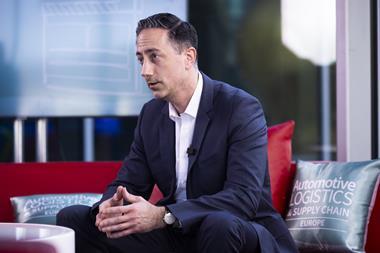The project in Southern Chile has begun its pilot phase to produce 130,000 litres of synthetic fuel from water and wind energy in 2023, using an efficient logistics distribution setup as well.
Porsche announced the start of production at its Punta Arenas, Chile, plant with a symbolic bit of theatre: filling up a classic Porsche 911 with the factory’s new, totally synthetic, fuel. The plant is now officially open in its pilot stage, with the intention to produce 130,000 litres of synthetic petrol per year as Porsche, Siemens and HIF explore the technologies and find greater efficiencies.
The project was announced in September 2021, as a multi-party collaborative effort. Porsche and Siemens are the primary partners for the synthetic fuel factory, with Chile’s HIF on site nearby to produce the green hydrogen for the project. Freight forward Kuehne + Nagel was responsible for transporting production equipment.
Hydrogen from HIF’s Haru Oni plant will be combined with captured carbon from the air, both processes powered by wind energy. The location was picked, at least in part, due to the abundance of wind energy cheaply available, as well as nearby port facilities.
Porsche’s chief procurement officer, Barbara Frenkel, said that the primary customer for the fuels generated at the site would be Porsche itself. ”We are seeing the worldwide first plant which demonstrates all the process steps; from wind energy, to the last step, until you receive fuels. So we will produce next year 130,000 litres of fuel, which we will take completely ourselves and it will be used in so-called lighthouse projects like our racecars running in the Porsche Mobil 1 Supercup as well as in our Porsche Experience centres.”
Despite being apparently remote, in southern Chile, Frenkel said that the site was perfect not only for power generation but for distributing the fuels. “The reason why we are here is there is a good infrastructure for transportation of the produced fuels. In the beginning of our pilot plant, these 130,000 litres, this is such a small quantity which you can ship in drums so you don’t need big tanker ships. But in the future, with bigger quantities, there is an existing transportation line going from here in all directions. So this is a very easy decision.”
The site will use the link between Punta Arenas, through the Strait of Magellan, to ship fuels to the port of Cabo Negro and then worldwide. ”The CO2 impact of the transportation per litre is very, very small. So therefore, it does not make a big difference if we ship it from Chile or if we were to build from the US or from Africa,” clarified Frenkel. “What’s important is we need to go to a location where renewable energy is available in excess so that we guarantee this high energy consuming process is is run under affordable conditions. The energy price here in Chile is very cheap, that’s why we are here. And we don’t see, at least for the upcoming years, any restrictions to export from Chile.”
The plant will initially run at 130,000 litres production per year during its pilot phase, which will continue for a currently undefined period before scaling to a projected 55 million litres as it enters full production and two years after that to 550 million litres per annum.


























![Global[1]](https://d3n5uof8vony13.cloudfront.net/Pictures/web/a/d/s/global1_726550.svgz)













No comments yet